By: Tom James, National Sales Manager, Base Camp Country
Timber Stand Improvement, or “TSI” for short, is an umbrella term used frequently by professional forestry consultants and woodland managers when discussing methods to improve the quality of a particular woodland property that essentially relies on one fundamental action. That is the reduction or elimination of non-desirable species that are competing directly with the ones that we want to encourage.
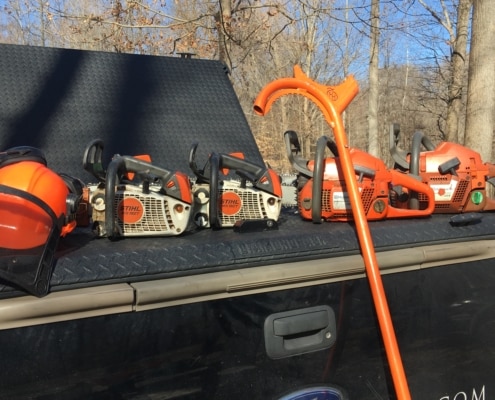
The question most commonly asked by a professional consultant to a landowner would be “what is your primary objective for your woodlands, and what use is most important to you?” The 2 most common responses are “to maximize the marketable trees for optimum profits” and “to create the best and most attractive deer habitat as possible.” The third and least common is to create an aesthetically pleasing (to the human eye), park-like atmosphere. Luckily for us hunters and habitat managers the first 2 objectives can go hand in hand and complement each other nicely. Unfortunately the third objective results in a barren landscape, devoid of wildlife food and cover from the eventual maximized shading that a closed-canopy forest creates. Luckily, the practices for optimizing marketable trees by eliminating competitive, low-value species does several things; It allows precious sunlight to the ground floor causing vigorous growth of nutritious forbs, weeds, and saplings, which conveniently double as ideal hiding and security cover for many wildlife species. It also releases water, sunlight and nutrients that would otherwise be used by competing trees to maximize the health and production of trees such as oaks and other mast producing species to put on good annual growth (maximizing market value) and produce high quality and quantity hard mast crops (maximizing wildlife attraction and sustenance).
So, when digging a little deeper into the methods for TSI, and more specifically, competition reduction, we find that there are a handful of commonly used successful practices. Although selective timber harvesting can actually be considered a form of Timber Stand Improvement when the action removes trees of a lower market grade, but still having some economic value, for purposes of this article we will be discussing the maintenance methods used in between timber harvests:
1.) Vine removal; This involves cutting wild grape and other vines by hand or by chainsaw that climb trees and over a period of time can successfully put such a burden on a desirable tree through shading and sheer weight that it weakens the host tree, stunting its growth and potentially killing it altogether. It’s also commonly recommended that the vine “stump” be treated with a herbicide such as Tordon to kill it and prevent it from sending out new sprouting vines.
2.) Girdling, Ringing, Hack and Squirt; These are all methods used to kill a standing tree without actually felling it. The girdling or ringing method involves cutting a groove all the way around a tree well under the bark into the cambium layers where the transpiration occurs moving water up and nutrients down the tree. Many consultants advise creating 2 rings one just above the other to ensure a thorough effective kill. The hack and squirt method involves cutting a notch into that same tissue of the tree with a sharp hatchet in multiple places around the circumference and “squirting” in some herbicide that will be carried to the roots of the tree eventually killing it. There is also a hybrid method of girdling with a saw and introducing the herbicide into the fresh ring to achieve the same results.
3.) Foliar and basal bark spraying; is the practice of spraying a herbicide on the actively growing foliage or applying it to the lower trunk area to introduce a killing chemical. These practices are most commonly used on non-native, invasive brambles, shrubs and trees to eliminate them as quickly as possible. These invasive species are also mechanically removed by machinery if the situation allows.
4.) Finally we are to the method that this article was to focus on and that is Hinge Cutting. This is the practice of cutting partially through a live, actively growing (most commonly competitive) tree and pushing or pulling it over to lay the trunk down horizontal to the ground. When done properly the tree will remain alive and retain its’ leaves and continue to send out new growth causing it to further “bush out.” There are several benefits to doing this, the primary reason is that you have essentially eliminated this tree as being a competitor for sunlight to surrounding desirable trees, but now the tree has just created instant cover and possibly browse for the whitetail deer. To encourage deer to move about under and among hinge-cut trees, the cut should be 4-6 feet above the ground. This will allow enough space under the horizontal trunk to allow movement. In certain situations where you want to influence deer to move a certain direction, the trees can be hinged much closer to the ground to create a fence or hedge effect. It is very important to not cut any further through the trunk than necessary to ensure there is plenty of tissue to support the movement of water and nutrients up and down the remaining trunk. A tool used to hook and pull or push the tree over is invaluable as it is often impossible to push a larger tree over by hand with the lack of leverage the person cutting has. Then cutting the tree further to get it to tip over has greatly reduced its chance of survival. A property that has undergone a well-executed hinge-cut operation will immediately become more attractive to the resident deer offering great security and escape cover. Many trees offer desirable leaves, buds and twig ends that will also put a lot of food within reach where it wasn’t before. But the additional benefit of now having more open canopy to allow the penetration of sunlight will cause an explosion of growth further enhancing the available food and cover on the ground.
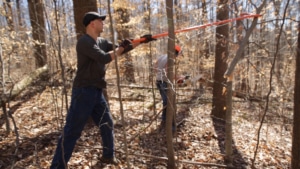
Hinge cutting can be done with some very simple basic tools most importantly an easy to operate, light weight chainsaw with a good sharp chain. The “top handle” professional types make this job a lot easier and effective. It doesn’t require a long bar either, something in the 14” range is ideal, but that is a matter of preference. As mentioned above the hooking tool is very important. A commercially available product available online is the “Habitat Hook”. Several models are available at varying prices. Please don’t forget the safety equipment! Chainsaw chaps to prevent accidental leg cuts when you’re tired or lose balance or control will help deter a serious accident. A hard hat with hearing protection is available everywhere and at farm supply stores and chain saw dealers. Safety glasses are also a must for not only preventing sawdust in the eyes but the constant barrage of twigs coming at your face when pulling over a hinged tree. It is also a great idea to have a light weight dead-blow hammer and a couple of plastic tree felling wedges to encourage some of the more stubborn hinge-cut trees to go the direction you need them to fall. Always work with a partner, and evaluate each tree and situation to be sure your action won’t cause a dead limb or a hung-up leaning tree to fall. This is a hugely necessary precaution.
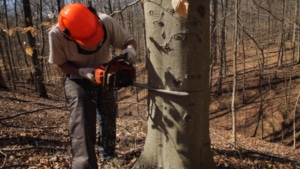
Lastly, if you are new to tree identification it would be a very good idea to get the advice of a professional to help you target non-desirable species (and the good ones!) so that you don’t inadvertently do more damage than good by killing a crop of young mast and timber producing trees. Many species are difficult to identify when they are younger, but with a little guidance to get you started you will soon be able to recognize your targets and the desirables that you need to protect and release from competition. For more information about hinge cutting and other ways you can improve the habitat and hunting potential on your property, check out the online resource “The Management Advantage” where we cover lots of relevant topics concerning land and wildlife management.
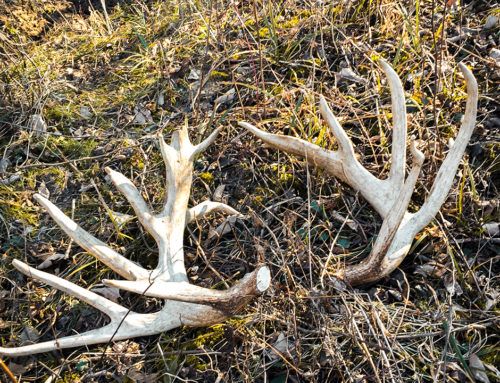
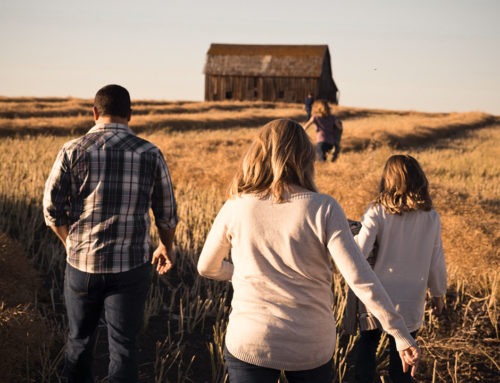
Leave A Comment
You must be logged in to post a comment.